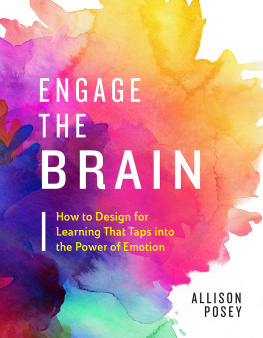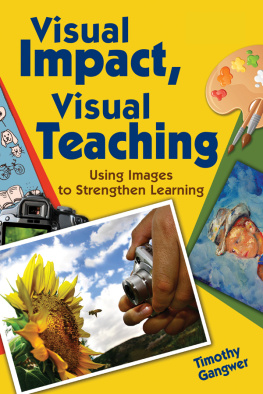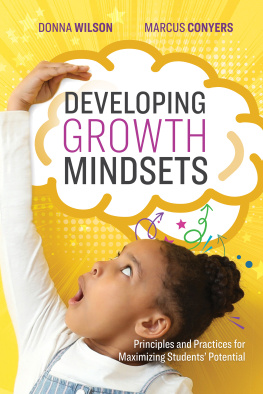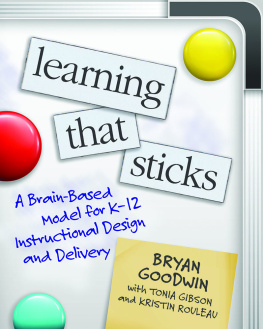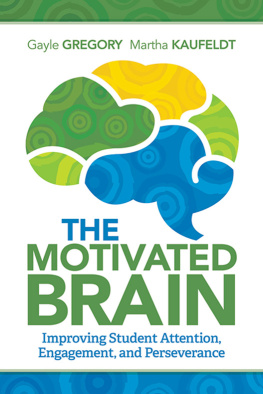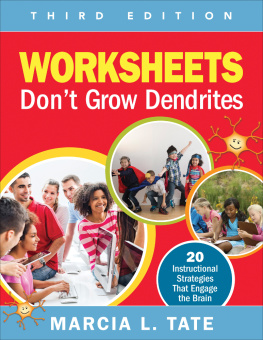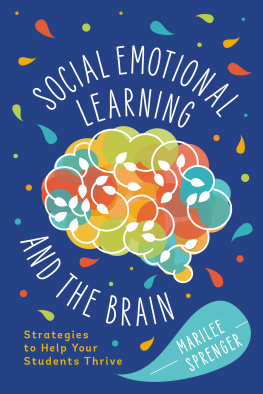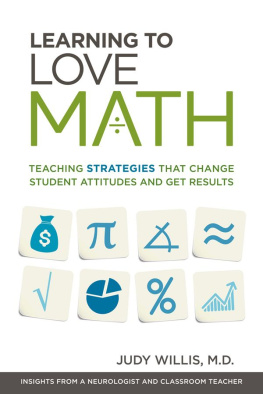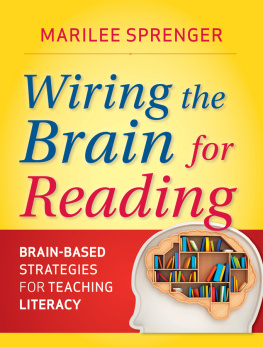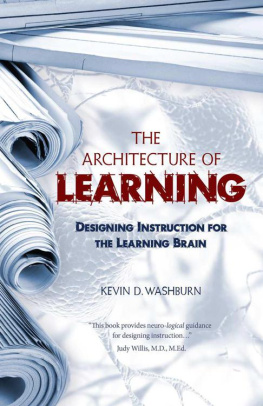Contents
Guide
Pages
Epigraph
....................
Education is the kindling of a flame, not the filling of a vessel.
Socrates
Acknowledgments
....................
In graduate school, my professor David Rose commented that "at its core, teaching is emotional work." I was overwhelmed with this phrase because it captured exactly what I had experienced as a teacher. I loved my teaching jobs, but every year I burned out. I experienced how engagement mattered for my students and their learning, but I did not know how to design for it outside of trying to have lots of fun activities. Recently, in my work with classroom educators, I find that most want to focus on strategies to support engagement; they see engagement as the biggest barrier to learning. I hope this book empowers educators to design for engagement, because we know that in order to learn, we must first be engaged. I hope it also empowers educators to design for their own emotional teaching journeys.
As I reflect on who to thank, I have to start with David Rose. With his mentorship in graduate school and leadership at CAST, I have learned so much about the role of emotion for learning. He is the first I know to use the phrase "emotional design." Universal Design for Learning gave me a new way to define engagement that aligned to my goals as an educator: recruiting interest, sustaining effort and persistence, and self-regulation. This was powerful. I want to thank my CAST colleagues for deepening my understanding of emotions and design for learning, especially Rachel Currie-Rubin (the other half of my brain), Sami Daley, Gabbie Schlichtmann, San Johnston, Kim Ducharme, and Yvonne Domings, and the CAST cadre who always inspire me, including Loui Lord Nelson, who encouraged me to keep writing.
Thank you to the educators from around the world who I have gotten to collaborate with and brainstorm about learning and design. I hope that we continue to share and build strategies so that we can engage every learner in equitable, inclusive, meaningful, and challenging learning opportunities. Thank you to my graduate school professors, Tina Grotzer, Todd Rose, and Kurt Fischer, as your work helped me work to frame the neuroscience-to-education conversation. I want to thank the educators and students from the schools where I have been privileged to teach, as it was with you that I gained real experiences about the central role of emotion for learning and realized that there is nothing more satisfying than an "a-ha" moment! It happens in unique ways and at different times for each of us.
All along the way, my incredible family and friends listened to my ideas at all hours of the day, shared their own learning experiences, and encouraged and celebrated the journey with me. Griffin and Ella, thank you for every trip to Natick and for inspiring me to keep growing each day. Thank you, Keith, for talking through how our fields overlap at all hours. I am so grateful to have you in my life. Thank you, Ms. Pickerel, my 1st grade teacher, who started me on this journey by showing me that even a walk down the hallway can and should be fun.
Introduction
....................
It came down to the final few seconds of Super Bowl XLVI. New England Patriots quarterback Tom Brady had one final chance to pass the ball for a touchdown that would make the Patriots the Super Bowl champions for the 2011 season. It had been a close game against the New York Giants. The Patriots led 109 at halftime and were still ahead, 1715, with two minutes left in the game. However, in the last minute, the Giants scored a touchdown, putting them ahead by 4. The Patriots needed a touchdown to win. On this cold Sunday night in February 2012 in Boston, I was glued to the television as Brady sent a final "Hail Mary" pass down the field. It was incomplete. The Patriots lost, and I went upstairs and collapsed into tears.
I am not a football fan. I don't think I have ever actually watched an entire game, but I was devastated by the outcome of this particular game. You see, the headmaster of the school where I was a teacher had said that if the Patriots won, the school would be closed the following day. I would get one day off from teaching my high school science classesa retreat in the middle of the cold, bleak, break-less part of the school year. My newfound enthusiasm for football was unbelievably passionate! I was confident in the pundits' predictions. The Patriots would win, and I would spend my Monday indulging in a slow breakfast, sipping hot coffee, and reading my favorite book in my pajamas.
As shocked as the Patriots were in defeat, I too fell into a similar state of shock that had nothing to do with football: I had to go to school the next day. Logically I knew that this one school dayseven hourswas not that significant in overall scope. I had already prepared the lesson, and now, with a regular Monday class session, we would not fall behind in content. Why was I so upset? I really liked my job, I had an incredible group of motivated students, and I was passionate about the content I was teaching. Emotions seemed to overrule my logic, and my tears continued to flow.
Looking back, I reflect on my Super Bowl meltdown with a statement from David Rose, a developmental neuropsychologist and long-time faculty member at Harvard University's Graduate School of Education: "Teaching is emotional work." My reaction to the Patriots' loss was not about dissatisfaction with my job, career, or overall direction in life. Instead, the emotion of teaching had overwhelmed me, and I was drained. By February, those seven hours of relief from the emotional energy required for effective teaching had become a magical oasis, a reprieve that I was desperately craving.
I started noticing more examples of the central role of emotion in teaching. At an opening faculty meeting I remember a second-year teacher sharing her concern: "I love the students, but I hope I can make it through this year." That was all she could say before she choked up with tears. Even though I have been in education for almost two decades, I still get those pangs of anxiety, butterflies in my stomach, and apprehension at the start of the school year. I could feel her anticipation of the emotional energy required for effective teaching.
Many people think that they can teach, perhaps because they have been students in school themselves or because they have expertise in a subject they enjoy. Often that confidence is overblown. A very successful Washington, DC, attorney joined a high school faculty to teach civics after a 20-year career in law. He was exhausted by spring break of his first year and was unable to return to the classroom. He commented that his time as a teacher had been the most challenging six months of his life. Content expertise is only a sliver of teaching; the rest is emotional work.
The Purpose of This Book
The purpose of this book is to inform educators about the brain science related to emotion and learning, and, more important, to offer strategies to apply these understandings to their own teaching. Although many of the approaches I describe will be familiar, integrating the lens of emotion and the brain may be a new concept. As an educator, I had been trained in how to deliver content and organize my lessons, but I had not been taught how to design learning experiences that support emotions for learning. I hope this book empowers educators to incorporate emotional design for learning.

